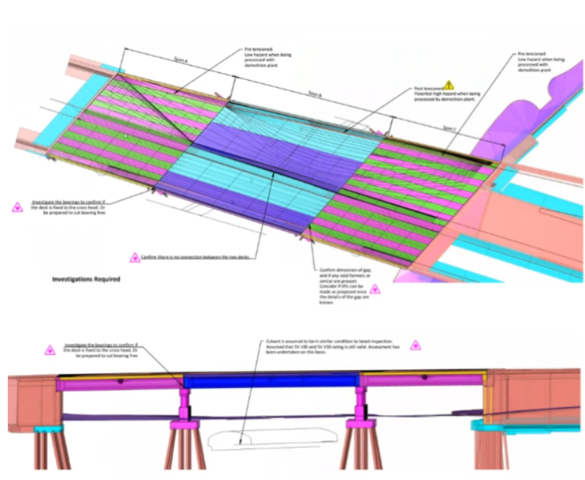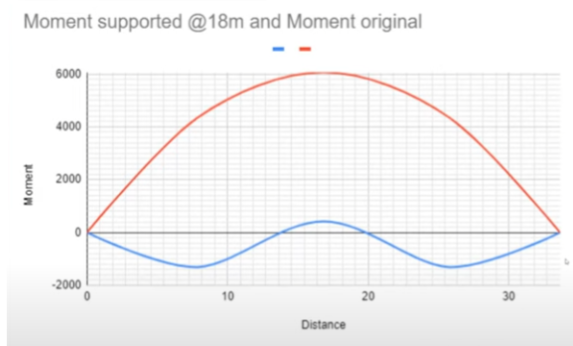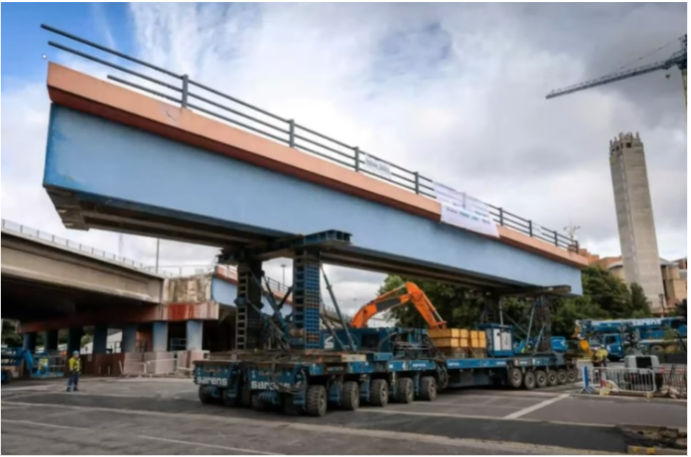Demolition engineering for removal of a post-tensioned bridge with prestressed elements in central Leeds with a dual carriageway over the top of the structure in both directions and a main road underneath.
Additional complexity due to the small site footprint and the requirement to retain the original piers and abutments for use on the replacement structure.
There is also the large masonry sewer underneath. Clearly shown on drawings, and discussed in webinar
Client: Leeds Council
Contractor: Balfour Beatty
Demolition contractor: Sam Evans and Sons
SPMT and Lifting Contractor: Sarens





